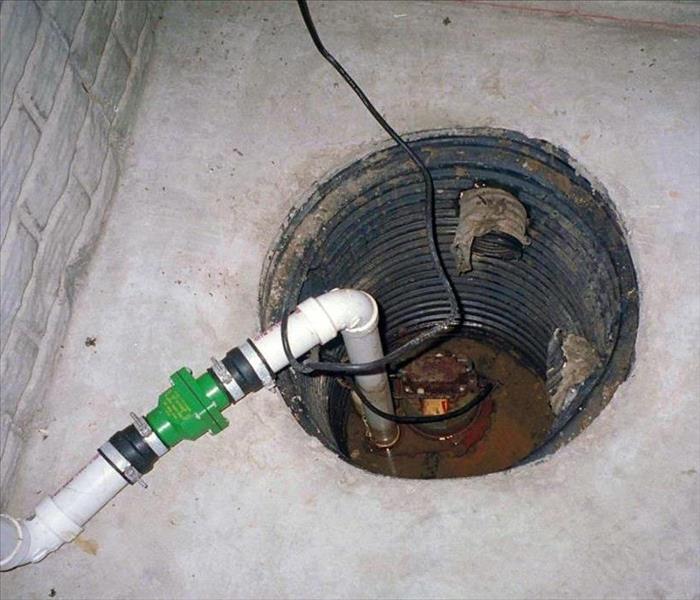Taking Care of your Sump Pump
4/4/2022 (Permalink)
Most sump pumps are equipped with water level or flood alarms, usually battery powered, that alert you if the pump isn't working properly and water is backing up. More sophisticated systems can notify your alarm company or call your cell phone if the water starts to rise. Fortunately, this shouldn't happen often! Sump pumps on the whole are quite reliable. But as with any other important piece of equipment, regular maintenance is always a good idea. Spend a few minutes every few months, when heavy rains are forecast and in early spring to ensure reliable sump pump operation. Basic sump pump maintenance is usually as simple as doing these few jobs.
Make sure the pump is plugged in to a working ground fault circuit interrupter (GFCI) outlet and the cord is in good shape. In damp areas, GFCI breakers may trip, effectively shutting off the sump pump. Check in on your sump pump periodically so you can reset the GFCI if necessary.
Ensure the pump itself is standing upright. Vibrations during operation can cause it to fall or tilt onto one side. This can jam the float arm so it won’t be able to activate the pump.
Periodically dump a bucket of water into the pit to make sure the pump starts automatically and the water drains quickly once the pump is on. If the pump doesn't start, have it serviced.
Physically remove a submersible pump from the pit and clean the grate on the bottom. The sucking action of the pump can pull small stones into the grate, blocking the inlet or damaging the pump over time.
Ensure the outlet pipes are tightly joined together and draining out at least 20 feet (6 meters) away from your foundation.
Make sure the vent hole in the discharge pipe is clear.





 24/7 Emergency Service
24/7 Emergency Service
